Wednesday, 4 July 2018
Explaining Science Not at Three Levels But at Five
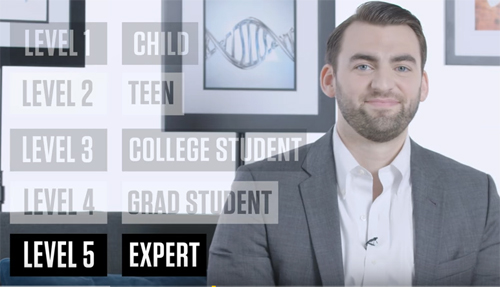 This week I’d like to draw your attention to a series of videos that the U.S. magazine Wired published on YouTube in spring 2017. In each episode of this series, an expert in a particular scientific field explain a complex concept in that field to five different people: a 5-year-old, a teenager, a college student, a graduate student and a colleague who is also an expert in that field. Thus you watch the expert explain the same concept five times—from the simplest possible explanation for the 5-year-old to a high-level discussion with the colleague. This is a highly original teaching approach that you don’t see very often, except on some websites where you can drill down from a simpler explanation to a second, more advanced one, or on a certain website about the human brain that provides three levels of explanation at five levels of organization (and whose author clearly must be obsessed with levels, probably because he read too much Laborit in his youth ;-P ).
This week I’d like to draw your attention to a series of videos that the U.S. magazine Wired published on YouTube in spring 2017. In each episode of this series, an expert in a particular scientific field explain a complex concept in that field to five different people: a 5-year-old, a teenager, a college student, a graduate student and a colleague who is also an expert in that field. Thus you watch the expert explain the same concept five times—from the simplest possible explanation for the 5-year-old to a high-level discussion with the colleague. This is a highly original teaching approach that you don’t see very often, except on some websites where you can drill down from a simpler explanation to a second, more advanced one, or on a certain website about the human brain that provides three levels of explanation at five levels of organization (and whose author clearly must be obsessed with levels, probably because he read too much Laborit in his youth ;-P ).
So you can understand why I couldn’t resist telling you about this web series, especially since one of the episodes deals with the connectome, a neuroscientific research topic that I have discussed previously in this blog and also teach in some of the courses that I give in French in Montreal. (more…)
From the Simple to the Complex | No comments
Tuesday, 1 May 2018
Limitations of Brain Mapping
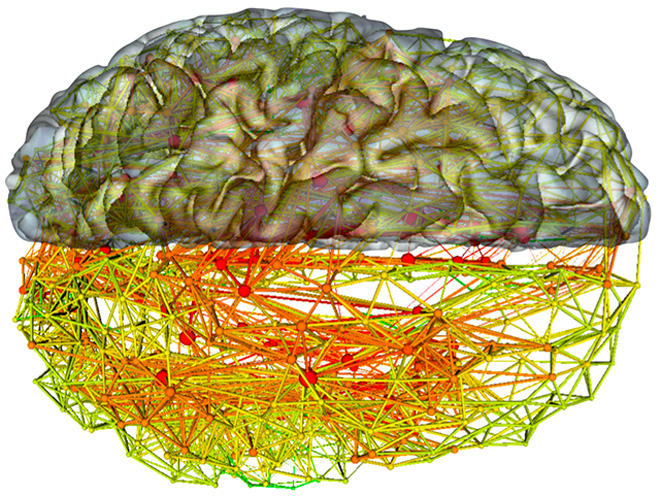 With the use of tracers, dyes and modern brain-imaging technology, it is now possible to produce maps of the human brain. But why would we want to do so? Simply because our cognitive functions emerge from interactions among numerous parts of the brain, in many cases physically quite distant from one another. If we can map the neural highways that form the various networks in our brains, or better still, understand which are the preferred highways for use in particular situations, we can learn a lot about how we go about talking, thinking and behaving.
With the use of tracers, dyes and modern brain-imaging technology, it is now possible to produce maps of the human brain. But why would we want to do so? Simply because our cognitive functions emerge from interactions among numerous parts of the brain, in many cases physically quite distant from one another. If we can map the neural highways that form the various networks in our brains, or better still, understand which are the preferred highways for use in particular situations, we can learn a lot about how we go about talking, thinking and behaving.
But because the brain is so complex, brain mapping involves many problems and is subject to some major limitations. In this post I will discuss just two of these problems and a few limitations inherent in efforts to map the “connectome”—to prepare a map of all the nerve bundles connecting the neurons to one another in a given brain. (more…)
From the Simple to the Complex | No comments
Monday, 12 December 2016
Some Amazing Predictions Based on Brain Connectivity
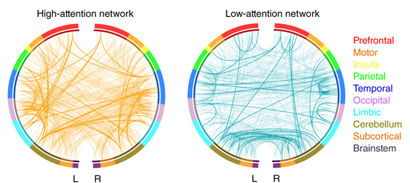
This week, I’d like to tell you about two very interesting articles. The first, by Emily S. Finn and her colleagues, was published in the journal Nature Neuroscience in October 2015 and is entitled “Functional connectome fingerprinting: identifying individuals using patterns of brain connectivity.” As its title suggests, Finn’s research team successfully identified individuals from patterns not on their fingertips, but rather in their brains! (more…)
From the Simple to the Complex | No comments
Thursday, 20 October 2016
Psychologist Scans Own Brain Twice per Week for a Year and a Half
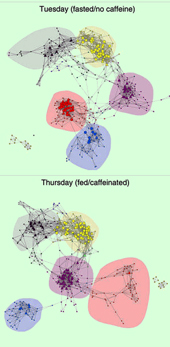 If you use social media, you have probably seen posts where someone has shown photos of themselves taken at regular intervals over a long period. Well, Stanford University psychologist Russell Poldrack has gone them one better: he has scanned his own brain twice per week for a year and a half! But Poldrack’s goal isn’t simply to wow his friends on Facebook. He is using the scans to do something that has never been attempted before: to understand how the connectivity of a normal person’s brain may vary over a period of several months, a span of time in which people with mental disorders often show considerable fluctuations in their psychological functions.
If you use social media, you have probably seen posts where someone has shown photos of themselves taken at regular intervals over a long period. Well, Stanford University psychologist Russell Poldrack has gone them one better: he has scanned his own brain twice per week for a year and a half! But Poldrack’s goal isn’t simply to wow his friends on Facebook. He is using the scans to do something that has never been attempted before: to understand how the connectivity of a normal person’s brain may vary over a period of several months, a span of time in which people with mental disorders often show considerable fluctuations in their psychological functions.
Poldrack calls his study “MyConnnectome”, and he published his initial results in the December 9, 2015 edition of the journal Nature Communications. It might seem surprising that no one had ever gathered such data before. But not many normal subjects would have been willing to do what Poldrack did: get into an MRI machine for a brain scan two mornings each week (one of them on an empty stomach) for a year and a half, have blood samples taken once per week, and write a report on his diet and physical activity every day. It took a scientist who was really motivated to advance the state of knowledge. (more…)
From the Simple to the Complex | No comments
Tuesday, 1 October 2013
We Are All Complex Networks
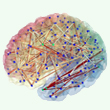
Before the Harper government’s budget cuts, the CIHR Institute for Neurosciences, Mental Health and Addiction (INMHA) had been providing this web site with stable funding for over 10 years. As a result of these cuts, the INMHA had to stop funding us. Now, because of the same cuts, we have had to stop publishing new posts on the English version of this blog every week and will instead be doing so only once every two weeks. We are truly sorry, but that is the best that we can can manage on a volunteer basis. So here is this week’s post. The others will follow at two-week intervals from now until further notice.
*
In some previous posts in this blog, I have talked about the RSA Animate knowledge-visualization videos and the Brain Science Podcast, and I promised that I would mention other videos in these two excellent series on occasion. Well the most recent RSA Animate video and the most episode of Brain Science Podcast complement each other so well that this week I want to tell you about both of them at the same time. (more…)
From the Simple to the Complex | Comments Closed







